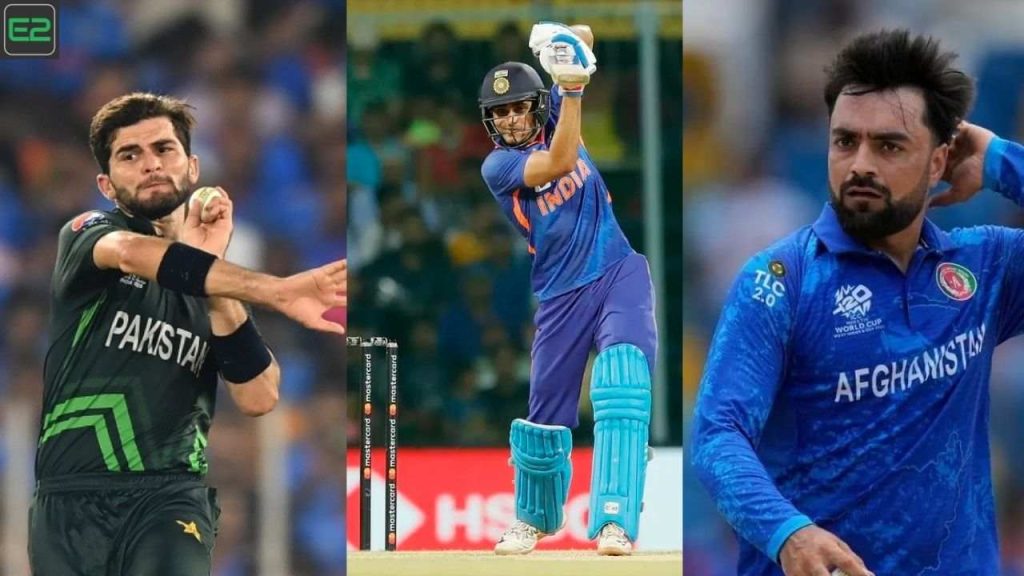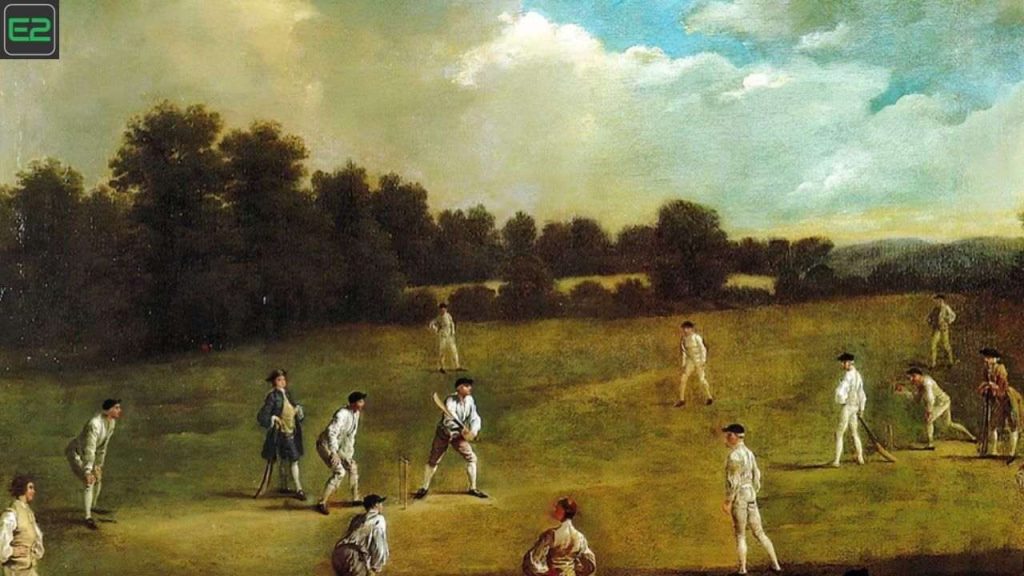The 50-over aka One Day International (ODI) cricket began on January 5, 1971, with the first game played at the iconic venue Melbourne Cricket Ground (MCG) between Australia and England. Initially, as the format evolved with time, the game was played with different overs. However, later on, as a standard practice, the number of overs was fixed at 50 overs by the mid-90s era.
But the key revolution which led to the starting of the ODI format can be credited to Kerry Packer, who started a World Series Cricket in coloured jerseys. Moreover, he went up a notch ahead and also included the concept of day-night matches which was the era of the late 1970s. As a result, the first ODI World Cup took place in the year 1975. As time slipped like sand grains, many more innovations took place which included things like powerplays, two balls being used and beyond. So far, 4,776 games have been played in the ODI history till now.
However, only a few players of elite pedigree have seen a complete evolution of the format across various generations and have successfully adapted to the modern demands of the game by constantly working on their technique and game awareness. As a result, these batters have produced special performances with an incredible ability to change the complexion of the game in the blink of an eye.
Let’s have a look at the elite players who are game-changers in the ODI format:
1 Sachin Tendulkar (India)

Fondly known as the ‘God of Cricket’, the Indian legend defined how to evolve and play ODI cricket across various generations. Such was Sachin Tendulkar’s batting genius that not only he could set the tempo of the game with his explosive boundary-hitting abilities but also milked singles and doubles to keep the scoreboard ticking. Moreover, he also added some innovative shots to his batting arsenal like the ‘uppercut’ and paddle sweep to keep the bowlers guessing.
Sachin’s ability to keep adapting to the change, in turn, changed the game in India. This was also the reason that made him the first batter in ODI history in men’s cricket to score 200 in an innings. He proved the saying ’change is the only thing that is constant in life.’ Eventually, the Indian legend bid adieu to the game after scoring a mind-boggling 18,426 runs with 49 centuries and 96 half-centuries to his name. Tendulkar featured in 463 ODIs while averaging an impressive 44.83 in his illustrious career.
2 Sanath Jayasuriya (Sri Lanka)

Another Asian batter who revolutionised the setting of the tempo of an innings upfront was none other than Sri Lanka’s legendary left-handed batter, Sanath Jayasuriya. The southpaw redefined the art of batting as an opener in the ODIs. He displayed his charismatic six-hitting abilities over the point and the square region with sheer ease. This helped him to take maximum advantage of the first 15-over restriction back in the day, which essentially meant that he brought in the concept of the powerplays years before it was adopted in the ODI format.
Jayasuriya just followed a blueprint used by Mark Greatbatch in the 1992 World Cup and the rest is history. Gone were the times when 200 was a safe target, Jayasuriya made 300 look like a minuscule target when it came to chasing or setting a target. His achievements in the 1996 World Cup and after that meant that Sanath Jayasuriya will forever be remembered as one of the best batsmen in the World of cricket.
3 Adam Gilchrist (Australia)

The job of the wicketkeeper used to be just to keep wickets and bat at no. 8 or 9 to give some support to the lower order. Australia’s Adam Gilchrist changed that perception with a jolt to the proper followers of the game.
The way he attacked the bowling from the onset meant every team now looked at a wicket-keeper who could contribute more than just keeping wickets.
Not to forget that stumpers are also expected to remain chirpy behind the wickets to keep the morale of the team up during the game. Like Jayasuriya, Gilchrist could destroy any bowling attack within minutes, scoring at more than run a ball easily. Gilchrist will be remembered as a batter who kept wickets and can decimate any opposition on his day.
4 Sir Viv Richards (West Indies)

Sir Isaac Vivian Alexander Richards was the first person to recognize the value of scoring quick runs in the ODI format. He was miles ahead of his time in the style he batted, attacking the bowling without wearing a helmet and hooking and pulling at will to bowlers of the calibre of Lillee, Thompson, Dilley, Imran and Kapil Dev.
Known as the original master blaster he sure did blast his way into record books with his 189* against England in 1984, a record that stood until 1997. Also a brilliant fielder and captain, Richards will be remembered as the original destroyer of bowling attacks.
5 Virat Kohli (India)

One of the ‘Fabulous Four’ of the modern cricketing greats, Virat Kohli has made chasing a total art. His mastery in chasing totals on every and any kind of wicket against any attack is baffling to see. The amount of runs he has scored since his debut in 2008, transformed him into one of the greatest batters to have played international cricket after the likes of Sachin Tendulkar, and Sir Vivian Richards, respectively. The only thing that differs is that he has done it with the aggression which was missing from the Indian batting.
With leadership capabilities and an attitude that matches his style of play, the former Indian skipper Virat Kohli hopes to break many more records and will be remembered as one of the greatest ODI batters to have ever played the game. So far, Kohli has featured in 295 ODIs and has amassed 13,906 runs with a stellar average of 58.18.
6 Ricky Ponting (Australia)

The former legendary Australia Captain has had a phenomenal winning record for the ‘Men in Yellow’. Ricky Ponting won two World Cup titles and shattered multiple records over the years with sheer professionalism in terms of playing aggressively against the opponents along with mind games to rattle them even before the game started. Eventually, grooming his team into an invincible and the most dreaded side.
Notably, the Australian team still today holds the unbroken record of winning 21 ODIs on the trot, which is the most by a team. Besides he also holds the winning streak record in World Cup cricket, under his reign at the helm.
7 MS Dhoni (India)

One of the most innovative captains and one of the greatest finishers in modern cricket, MS Dhoni’s impeccable ability and composure to finish the games, still remain unparalleled. The former Indian Captain often took nail-biting encounters to the last over and finished by hitting the winning runs with a six.
Dhoni’s captaincy can seem odd on several occasions, but it eventually led Team India to a historic ODI World Cup title in 2011. His finishing methods may be debated as risky, but he wins the game eight out of 10 times on an average and that is more than any other batter could do.
8 Shane Warne (Australia)

The legendary Australian brought back leg spin from the brinks of extinction in limited overs format. Late Shane Warne possessed unbelievable control and style making leg spin popular again. In those days, teams usually didn’t like any leg spinner since batters started taking them apart, but Shane Warne with his guile and skill showed that spinners can be successful in ODIs; leg spinners could be a wicket-taking option for their captains.
His highest point was the semi-final and final of the 1999 ODI World Cup where he picked up the Man of the Match award in both matches taking four-wicket hauls on each occasion.
9 Wasim Akram (Pakistan)

The most complete ODI bowler ever, Wasim Akram changed the way fast bowlers bowled at the death overs in ODI cricket. He could swing the new ball besides bowling bouncers, along with fiery yorkers.
Moreover, Akram wreaked havoc and left batters completely bamboozled with his lethal reverse swing at the fag end of the innings. It is worthy to mention that the former Pakistan Captain was the first bowler to take 500 wickets and 2 hat-tricks in ODIs. Akram is and will remain a legend in One Day and cricket history.
10 Shoaib Akhtar (Pakistan)

The ‘Rawalpindi Express’ aka Shoaib Akhtar brought adrenaline into the game with his 100 mph yorkers bowled at the toes of the batters. He could create a moment of fear in any batter and was used by his captains as a wicket-taking option.
The highest point for Akhtar was in his first World Cup in 1999 when he destroyed New Zealand in the semi-finals picking up 3 crucial wickets with seriously high-paced deliveries. He brought on a pace war between himself, Brett Lee and Shane Bond, which he won on numerous occasions. A genuinely quick bowler who brought excitement in cricket with viewers waiting for him to break stumps again or break the ribs of the batter who took it on the body.
11 Lasith Malinga (Sri Lanka)

Fondly known as ‘Slinga Malinga’, the Sri Lanka pacer completely revolutionized the art of bowling and the spirit of modern cricket with his smile. Notably, Lasith Malinga is the only bowler to take 4 wickets in 4 balls in ODIs, 3 hat-tricks in ODIs and numerous other records.
Malinga was primarily used as a wicket-taking bowler. He could bowl seriously fast or snail slow, both yorkers and bouncers. The unorthodox also used to smile even if he was hit for a four of a good ball and never engaged in sledging or any extracurricular activities on the field.
12 Michael Bevan (Australia)

The former legendary Australian batter can undoubtedly be called the ‘King of finishers’. Before MS Dhoni arrived on the international stage, Michael Bevan who often batted in high-pressure situations and with the tailenders, showed immense calmness and an easy method of getting the better of the opposition. Due to modern-age cricket, the legendary figure often gets overshadowed and his contribution in putting a price on his wicket and revolutionizing the art of chasing and finishing the game goes unnoticed.
During his stellar career, Michael Bevan featured in 232 ODIs for Australia. How good a batter was he can be understood by the fact that the quality of bowlers in those days was arguably much superior in terms of skills and game awareness. As a result, finishing games was way more daunting. Despite that Bevan went on to score close to 7,000 runs in the ODIs with six centuries and 46 fifties to his name. During his ODI journey, the southpaw maintained a stupendous average of 53.58. The magnitude of his contribution to ODI cricket can be understood by the fact that Australia completed successful run chases a whopping 45 times. Incredibly enough, out of them, Bevan remained unbeaten on 25 occasions for a winning cause.
You will have fun playing exciting games on here: E2Bet
Here Are Some Helpful Tips:













